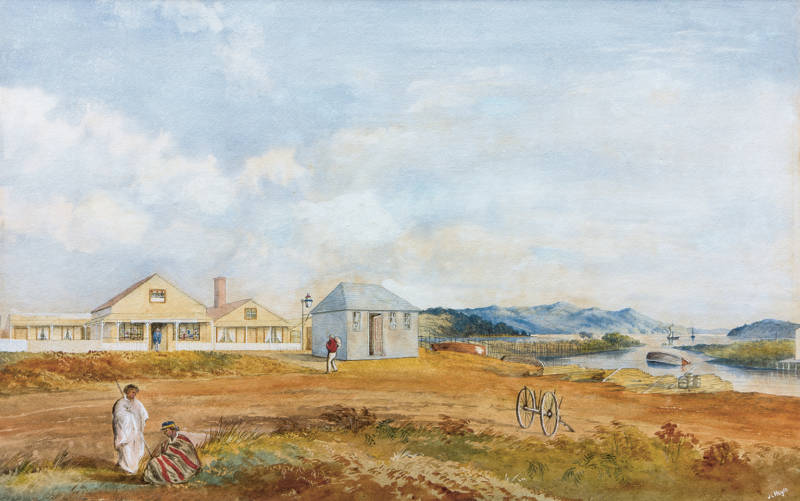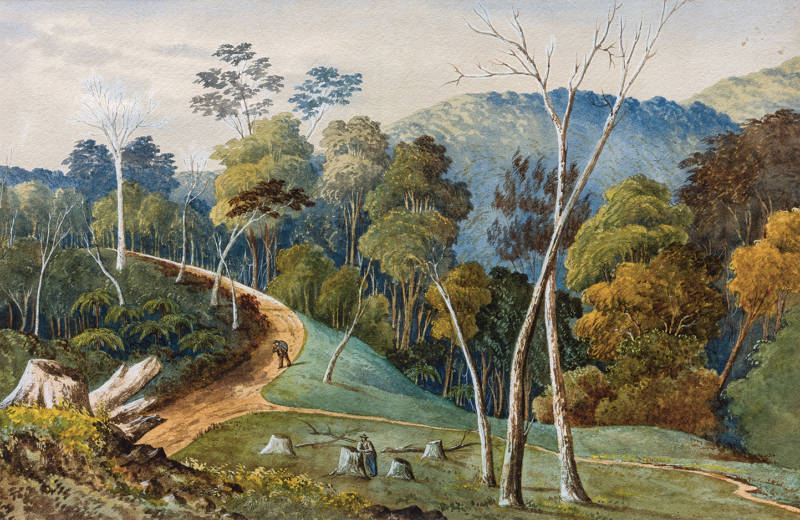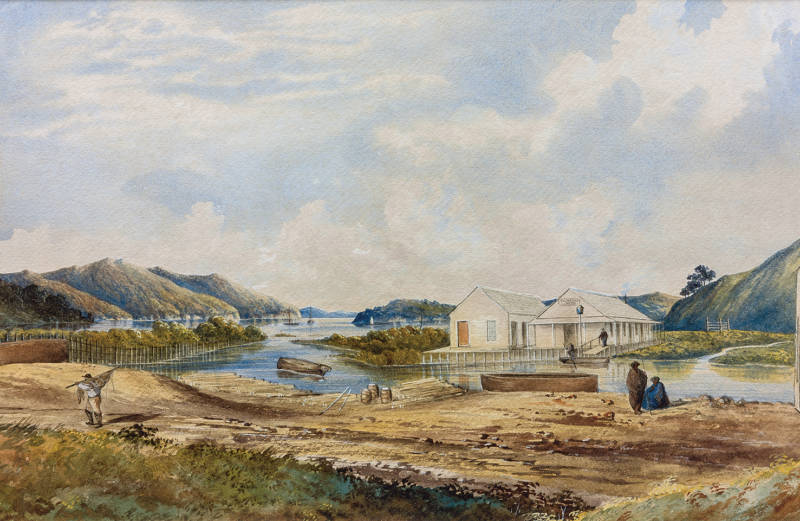

Born in England, John Barr Clark Hoyte arrived in Tāmaki Makaurau in 1860. He had, it is said, spent some years in the West Indies and briefly returned to England, where he married. Hoyte worked as a school teacher, private art teacher, watercolourist, and sometime importer of art supplies. In 1869, he was one of three founding members of the Auckland Society of Artists, with which he exhibited between 1871 and 1877. By 1876, he had moved to Ōtepoti and was exhibiting with the Otago Arts Society. In 1879, Hoyte went to live in Sydney, where he remained for most of the rest of his life.
With John Gully, Hoyte was generally recognised as the premier New Zealand artist of the time. Both artists usually subordinated topographical accuracy to picturesque effects of light and atmosphere. Hoyte’s paintings are to a certain extent produced to a formula, showing a preference for bright colouration and strong blue/purple shadows. His compositions are static, which gives them a calm, undramatic beauty. In his 1983 book Frames on the Land, Francis Pound pointed out how closely Hoyte followed the list of requirements for a picturesque painting laid down by William Gilpin.
Backgrounds are provided by mountains or water; middle grounds by valleys, villages, or woods; foregrounds by ruins, rocks, broken ground, or battered trees. Backgrounds should be painted with tenderness of tone, while foregrounds should be painted with richness and glowing tints. Cloaked Māori figures in works like Commercial Hotel, Coromandel and Tauranga Hotel, Coromandel satisfy Gilpin’s stricture that people in picturesque works should resemble classical figures.
A more detailed biography is available on Te Ara The Encyclopedia of New Zealand.


